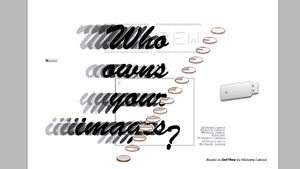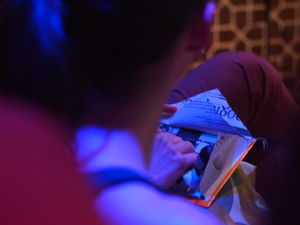User:Zigbe/ThematicProject 4
Michaela Documentation project
After a series of conversation with Michaela, I finally had access to 16GB of files she had recovered from several hard drives. Those files where the core of her installation “DEL?No, wait!REW”. An installation where the user is confronted with the option to erase or share a file recovered from a series of Hard Drives Michaela had been collecting from dumped or forgotten hard drives she finds on her hands.
Once I connected the USB stick on my computer, I first had to eliminate hundreds of virus and trojan horses, my anti-virus software went in completely madness. As I went through the content I started to collect what I considered to be redundant, organize it and erase the rest. It was about one hour and a half of this process that I realized that this performative action should be recorded. But there was no way to record it because the files were erased and there was no way back. It made me think of memories that you want to forget, or keep the best part of it on under the memory fogs that fades with time, but once they are crystallized in digital files they seem to become too real. Memories that tend to exist by itself, lost inside the grid, like ghosts. Machaela's work made me think of how hard it is to disappear. It questions the life of a digital artifact and the user's power on its existence. This performative act made me feel the confrontation of her project, and from the point of view of a designer, I though this documentation project should confront the viewer with the same feeling.
After a couple of online sketches, every web manifestation of her project seemed to badly mimic her work. Was than that I realized that a booklet on the format of a postal card that had to be destroyed in order to show more of her work seemed useful way to promote the project. So I proposed a booklet with a series of strings attached to the corners and the border of the pages connected together. In order to go through each page of the booklet, one had to pull a string, which would rip the page apart and reveal a page and a new string, slowly finding its way to the last page. Each page was designed using the images from random unknown users, that I found when looking inside the images cached by the their web browser, as if each page would revel a bit of a hard drive identities. Mixed together there are images of her actual documentation covered by QR code. Once the QR code is visited it leads to a piece of her installation, either a video or a photo.



